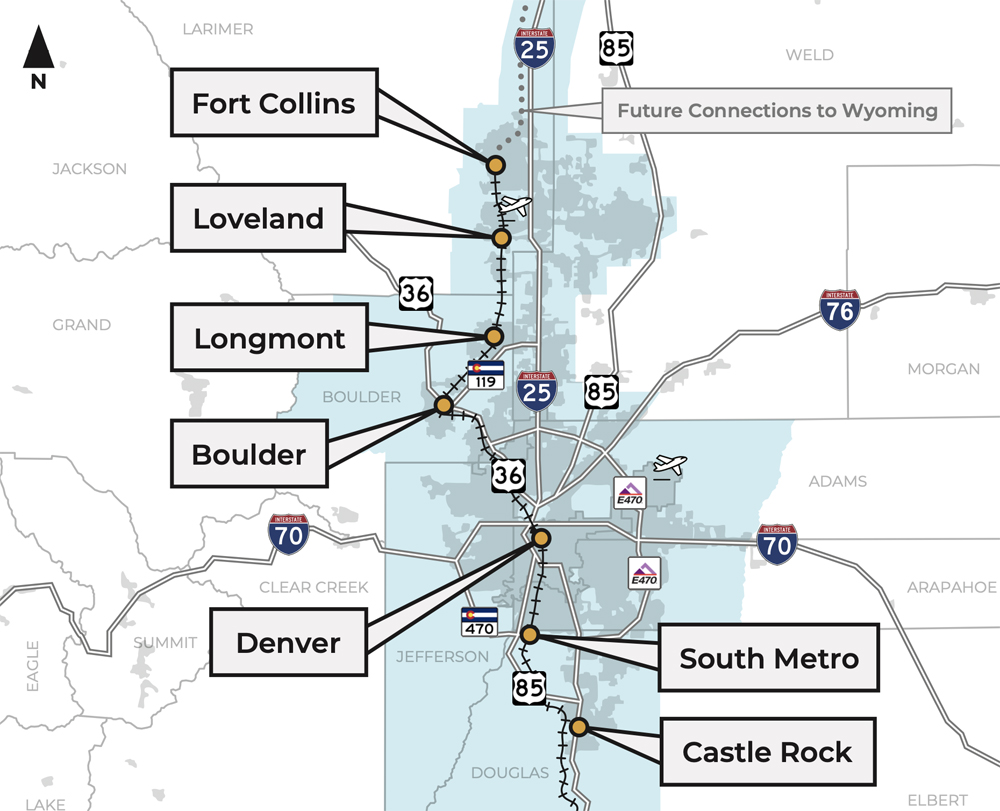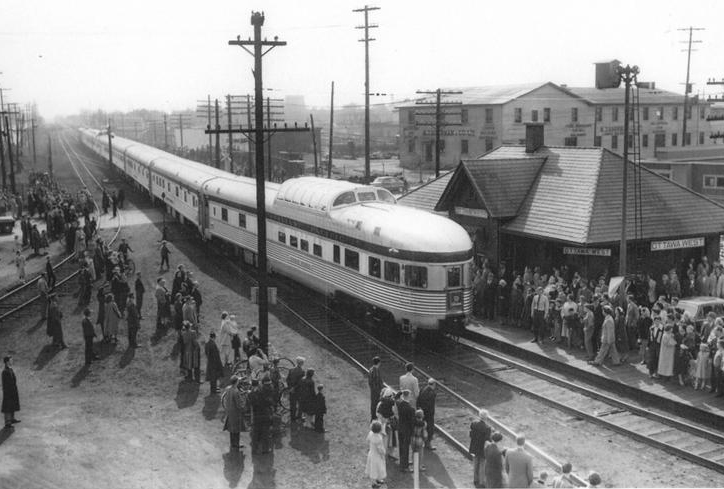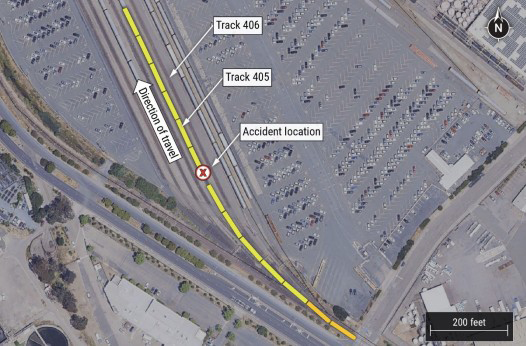
CHEYENNE, Wyo. — Cheyenne’s mayor has launched a new group to aid in efforts to bring passenger rail service back to Wyoming’s largest city.
Mayor Patrick Collins announced creation of the 10-member Cheyenne Passenger Rail Commission on Monday, saying the group’s first meeting is set for this Friday, Dec. 15, at 10 a.m. It will promote efforts to bring passenger service back to the city of 65,000, including working with Colorado’s Front Range Passenger Rail District and federal officials, making decisions on planning efforts, and supporting a Service Development Plan for extension of service to Cheyenne.
While the Front Range District says its long-term concept includes serving Cheyenne, and the District includes Colorado counties as far north as the Wyoming border, the version of Front Range service included in the Federal Railroad Administration’s Corridor Identification and Development program extends from Fort Collins to Pueblo, Colo. [see “Legislators announce selection of nine more passenger routes …,” Trains News Wire, Dec. 6, 2023].
“Bringing passenger rail back to Cheyenne would provide enormous benefits to our community,” Collins said in a press release. “Train service will make it easier to get up and down the Front Range and give us a major economic boost.”
The city includes a mix of city, county, and state officials, as well as one citizen representative. More information on the board and meeting agendas will be available on the city’s website.
Cheyenne has been without Amtrak service since discontinuance of Amtrak’s Pioneer in 1997.














Williston ND’s growth has a lot more to do with the Bakken oil formation than with any rail service.
Williston was an operating stop on the Great Northern. In fact, it was the time zone change between Central and Mountain time.
Since the trains stopped there, people rode them (a lot of passes). The Builder goes through Williston anyway so if there are passengers, stop and pick them up. Williston handled 14,279 pax in 2022.
As to the Front Range, the May, 1945, Official Guide shows Burlington Trailways ran a Chicago-LA bus, using the Lincoln Highway through Cheyenne, paralleling the UP. C&S had one round trip between Denver and Billings via Cheyenne and one round trip beween Denver and Cheyenne, connecting with Chicago trains at Denver. C&S had four round trips between Denver and Pueblo; two of these were Santa Fe trains to La Junta and two C&S-FW&DC trains to Dallas.
Passenger rail won’t give Cheyenne much, if any, of a boost (in my opinion only). What it might do is provide an alternative to the insanity of either I-25 or US 287 between Denver and Cheyenne. Riding on any sort of passenger train between those two points, even at 20 mph, would be preferable to the drive. As much as I like the idea in a vacuum, I question whether a passenger rail alternative could carry enough people to even make a dent in the highway traffic.
Passenger rail is a good alternative to driving,beneficial to the train rider, but doesn’t change the scrum on the freeway. The diversion is too small.
Of course the train would go through Boulder, where the state university is located. Not familiar with the route, I looked it up in an old Official Guide. This was the Burlington (technically, Colorado and Southern), which had a once-daily Denver to Billings train on a leisurely pace. Boulder’s ubiquitous Subarus would outpace it easily. Even Boulder’s thousands of bicycles would give it a go.
I can’t say if the Front Range passenger advocates have spoken to BNSF. How would I know? What’s interesting in the (short) article above is that the word “BNSF” doesn’t occur. How easy it is to look for a railroad on a map and just assume that a passenger train can run along it at a decent speed and daily frequency.
Yes we all favor passenger trains. Where is the data that shows passenger trains create an “economic boost”? Seems to me that Colorado has had a whole lot more economic boost in the years virtually without passenger trains, than it had when there were lots of passenger routes. Trace the E470 east of Denver. You’ll see plenty of economic boost, boosted by people who don’t ride passenger trains. That would describe my own family living in that area. Actuallly it’s beginning to describe me as well. I’ve flown in and out of DEN several times since the last time I rode a passenger train, which was September of last year.
Ditto across the country. Columbus has emerged from relative obscurity to being one of the larger and more prosperous cities in the Midwest. It hasn’t had a passenger train in decades. On a smaller scale, look at Madison, another booming city which like Columbus is the state capital, the location of the premier state university, and a growing center of corporate business. Madsion hasn’t had a passenger train since 1971. Or a really decent, functional passenger service since long before that year. Even when Madison still had passenger trains (of a sort), the trains connected to Chicago, not to Milwaukee. Generations of kids from Metro Milwuakee have attended U-Wisconsin by riding the bus along IH 94.
It’s actually a very simple academic exercise. There are two parallel main lines east-to-west across North Dakota. One line has a passenger train. The other doesn’t. Has anyone looked to see which set of towns is more economically boosted?
A passenger train is a mode of transportation. Let’s stop pretending that it underpins economic growth.
It underpins political spending (much of it to the labor unions) and favoritism which is much more important. Look at California’s HSR.
Williston ND.